This is a story about water. It begins a long time ago, as some stories do. Back then, the rain fell, as rain does, and the Celts were making wine out of it in their valleys north of Rome. When the Romans showed up, with their swords and their ploughshares, the Celts learned Latin and just kept right on. This is not a story about the Celts, though. It’s a story about water use in the northern reaches of the Western North American desert, but that story just doesn’t make sense in any way that makes sense unless it first trickles East and flows along paths among the vines until it arrives in deep memory. Imagine you’re walking beside that path that is a stream, and you look up, and there, right there, are are some of those old vineyards, that go back over two thousand years. Yes, you are in Rome now, and if the people don’t speak Latin, they do speak a Swiss French Patois that sounds a lot like Welsh.
The Vineyards of Sion
These are among the most dramatic vineyards in the Valais, on the slopes between the blue glacial currents of the Rhone River and the glaciers high above. Some of these planting grounds are over 2000 years old. Most of the stone walls date from the 1890s, but many of the waterworks among them are ancient.
Before this story flows with that ancient water, it might be a good idea if we, its readers, just stepped to the side for a moment, and looked at how water is put to use today, across the sea and among different mountains. Hopefully, then we can then set all that sprinkling and spraying and dribbling aside and look at water in a larger sense, and find technologies that may be useful again in these, the last days of oil. So, let’s just dive in.
Bonk!
Oops! No diving in here. This, of course, is a trickle irrigation system, which means that it delivers water drop by drop by drop to one spot on the soil surface. The water fans out underground to deliver water to the vine roots. It does not, however, go very deep, concentrates salts at the soil surface and leaves each grape vine to survive in one tiny hydroponic environment. It does, however, limit evaporation.
Water is moved around today at great expense. It requires electrical pumping systems, expensive petrochemical piping, high country dams, vast water mains, considerable upkeep, and high annual amortization, energy, and service costs, and there’s just not enough. Here in the Okanagan, society exceeded sustainable water use twenty years ago. We’re just living on borrowed climactic luck. Maybe we can make our own, new luck, though. Back in the Celtic Rhone, for example, there was just no way anyone could pay for the expensive infrastructure that is taken for granted today. People had to start with less, and achieve more. What they achieved is called art today. Sometimes it looks like a lot of fun. For a good example, let’s glance quickly north…
Aquatic Bicycle, Freiburg Im Breisgau
The one-time Roman, one-time Austrian and now German city of Freiburg is cooled by channels of fresh water sluicing through the streets. At one time, these channels acted as a kind of continuous fountain, bringing fresh water to everyone’s door as it flowed out of the Black Forest towards the Rhine. Now it’s there for the delight of it all, and what better place to cool the tires on your bicycle, eh!
This idea of water being something that flows, rather than something that is blended with liquid petroleum-based fertilizers and emitted in drips is as old as the hills. It’s as old as Rome. It’s older. It’s not, however, a scientific story. This technology was developed before science, and it does not require scientific analysis in order to be grasped and understood. For instance, north and west of Freiburg, along the Rhine, halfway between Switzerland and the Netherlands, a wee bit south of the mermaids of the Lorelei cliffs and legends of dragons and golden rings, there’s a valley of old grain mills, spaced a kilometre apart (just enough to let water drag a bit of gravity along with it, which could be siphoned off before passing it on), there’s an old monastery, that’s now a major pilgrimage site, where the caretaker’s first self-appointed task in the morning is to check the garbage cans outside the entrance to the chapel, to see if any pilgrims left some returnable mineral water bottles there the evening before. It’s called the Cloister of the Valley of Mary, and it looks like this between rain storms in June…
Mariental Cloister
Don’t let appearances fool you. This was once a major industrial centre and one of the world centres of the wine industry. This and the eleven other cloisters surrounding the southern mouth of the Rhine Valley once produced 100,000 litres of wine a year, much of it to the glory of the Bishop of the old Roman regional capital, Mainz. This is the homeland of the greatest white grape of them all, the Johannisberg Riesling.
The church has lost much of its industrial and political weight here, but it’s not dead yet. It’s power is more subtle now, yet is no different from that old industrial model. Here’s one of its engines, powered by beauty and an idea older than Christianity itself.
Mary and Joseph
Look what was hiding inside a chunk of sandstone hacked out of the local cliffs. Pretty nice, indeed!
Yes, this is a story of water. Really. Here, for example, at Mary’s lovely feet, is a map of the Rhine and an idea of how you can press the old gods with the tenderest toe and bring forth, well, something that is best called God. This part of the statue is identical to the one above, just a little bit less subtle. Take a look…
Squeezing that Old Snake
And look what the snake, the Rhine, the dragon, the vine, produces… the triple God himself, in the Highest. The trick is, though, you just can’t apply too much force. The strength has to pushed out of the old God into the new one, slowly and tenderly, without killing him before it’s done. Think of the statue as a clock, moving from bottom to top. Here (at the bottom), at the beginning of Christian Time is the beginning of the end of Christian Time, Mary and her Child (at the statue’s crown). It takes time, but all good things do, just like wine. You can’t rush it.
Now, you might think (and I wouldn’t blame you), that I’m wandering off topic, but water flows, right? And that’s the point. Just a couple hundred metres away there’s this humble little fountain that gives the whole game away…
Maria’s Fountain
Many cloisters are founded around springs, but here in wine country the only still-functioning cloister is founded around a stream. The point to that is given in a poem, left as a prayer by a pilgrim and set on a nearby post. As she meditates, this water does not miraculously appear and bring inspiration from a hidden and unknowable source, but flows openly and simply passes through the fountain as a stream, with no visible source and no visible end. The pilgrim who left the poem found rest by giving herself to the flow and thereby being released from the struggles for definitive (and by my guess male) knowledge and stony rigour.
But, of course, this is not a religion based around Mary, Mother of God, but around God (or Christ) Himself, and here He is, telling the same story, under the ancient, non-Christian trees…
Open Air Altar in a Forest Clearing
With green Biergarten benches, too, which is a really lovely touch. In this pilgrimage church, pilgrims pray together among the trunks and branches of the eternal life that springs from the earth, rather than in a stone hall carved to represent those trees but really holding up a heavy stone roof. Notice the image of Christ on his cross, which is really a vineyard at harvest time.
No heaviness here!
Christ Springing from the Soil, with Leaves.
A nice takeover of old Celtic and Greek tree technology, if I’ve ever seen one, but with no heaviness to it, just the joy of the trees.
Here is the heaviness.
The Imperial Baths, Trier
It took Christianity to turn monuments to water like this into monuments to air.
And where did the Romans get all the water? From the hills. Down the Mosel River, for instance, an urban villa was built in the little town of Pölch and drew its water from an ancient system of water management designed for arid climates and imported from Iran about a century before Christ. It was a reverse form of trickle irrigation, that relied on gravity and was built to last. It’s called the Qanat. It’s built from a series of underground tunnels accessed by vertical shafts, that slowly trickle water into a central channel, which delivers it through stone to its ultimate destination (in this case a bath of truly upper class proportions). In Pölch, the entrance to the main channel of the Qanat looks like this…
The Pölch Qanat
This ancient waterworks was rediscovered in the 1930s.
This main channel also served as an access channel, large enough for workers to enter and clean out any debris that might be blocking the water flow. Below is a look inside the channel. The light that you will see in the image comes from more recent wells sunk into the roof on the site of the villa itself, at intersection points with the side channels feeding water in from the Qanat network.
The Service Channel for the Pölch Qanat
The floor is set with a layer of slate, so that water can flow beneath it, free of any fine clay silt that might clog it up and impede its flow.
Water was not gathered quickly in a Qanat, but flow it did and, remarkably, after 1800 years (almost all of that without any maintenance at all) the water still flows and provides part of the water requirements for the 447 citizens of Pölch.
Roman Water
The town fountain of Pölch, still flowing after 1800 years.
Now, to bring a meandering, watery story back to its beginning and the irrigation of fields, the thing that ties all of these threads together (Rome, Iran, Mary, Christ, and the Bishop of Mainz) is the grape (an agricultural product), and the slopes on which it is grown. The ancient water of the earth that flows through Mary into Christ and into His pilgrims also flows through the slate that some people might call soil and into grapes, and there reveals itself as wine. Below is an image of the site of the Qanat, to give you an idea of how it all looks. This is where the grapes are keeping up the old work.
View Over Pölch
The Qanat is directly underfoot. The grapes continue its work, above ground. Like the qanat, they are rooted in neither soil nor dirt, just in slate.
Water here is a slow affair that moves through life. It trickles, and without petroleum technology, either. Down on the River Mosel, though, people have a newer idea of water, and I must admit, it’s a heck of a lot of fun…
Petroleum Based Water Technology
Joyriding on the Mosel during the Corpus Christi Festival. The festival that celebrates the body of Christ incarnated in bread and wine is a national holiday throughout much of Northern Europe. Here on the Roman wine river, the Mosel, it takes on a rather unique form: every winery (and there are thousands) throws open its doors and people ride their bicycles and motorcycles between them. Beer glasses are just not to be seen.
These are not metaphors. In the pre-scientific world this was what technology looked like, and it’s this technology that now looks like spirituality and art that drove water technology for most of Western history, so let’s get right to it and see how all of that developed a technology that survived long after the Industrial Revolution. This story can be told quickly, through a series of images. A good place to start is back at Johannisberg, the holy grail of riesling.
Johannisberg Cloister
The vineyards of this cloister flowed into those of Mariental and Mary’s delicate foot five kilometres to the North. Note Johannisberg Palace in the background, which took over the vineyards from the monks. Note the rain. Brr.
The water that flowed down past the roots of these vines was not captured in the underground leaf-vein-like fans of qanats, but on the surface. The process, however, was very much the same. What was underground was now brought up to the light. These channels were painstakingly rebuilt with concrete after World War II, and they look like this…
Old Surface Qanat, Mariental
Water doesn’t flow here anymore. This death of a technology is what is called romantic now. The tourist industry is based on it.
The water is now captured in wells and pumped into underground piping systems, like this…
The Mariental Pumping Station
Unlike the older systems, it requires extensive capitalization and high annual fees.
It also requires security. Here is the main Rüdesheim station, below Johannisberg itself…
The New Technology with Its Barbed Wire
This is a new definition of public utility… one so expensive and fragile that the public must be excluded from it. In comparison, the old system was pretty much indestructible. (Well, except for the bad aiming of US bomber navigators while being strafed with German flak on their way to Frankfurt, twenty kilometres away.)
The new system delivers water to household taps, toilets, hotel rooms, and garden sprinklers. It is a system for gathering water, to drink (and sprinkle). The old system was a system for gathering gravity, or the power that fell from God and flowed freely over the earth before moving into God again, and delivering it where it could be used, like this…
Vineyard with Mill
Mariental Cloister is two kilometres away, behind the screen of trees in the background of this photo. The paved vineyard road in the foreground is the old surface qanat. And what did you do in the mill? Why, grind grain into bread, that was, of course, the Body of God. This world was a poem, or a prayer, and it was complete, right down to its technology. If you understood poetry, you could master its machines. A technical education, or even a degree in Creative Writing, was not needed here. You just needed heart, and you needed to look at things and see patterns. Those patterns originally gave us the Industrial Revolution, but now that that revolution is largely over, the patterns remain. They never went away. Neither did Rome. Or Mary. Or the Celts.
Here’s an image from Rüdesheim on the Rhine, that shows how the surface Qanat functioned…
Vineyard Road at Ehrenfels
The road doubled as a water collection apparatus. As a point of interest, Ehrenfels is the honorary home of that other great white wine grape, Ehrenfelser. In the old, ruined castle courtyard you can wander on a June day and pick wild strawberries from among the weed-whacked weeds.
Notice how the road above slopes inward towards the vineyard wall, instead of outwards as a modern road would to shed its water to the slope below. When this device was built, water was too precious to waste like that, and it wasn’t being gathered for the crops. Here’s a better view…
Water Channel Set into the Schlossburg Road, Ehrenfels
Here, as in Mariental, the water was collected, and delivered in controlled streams downhill…
Water Reservoir on the Way to Ehrenfels
Water collected on the vineyard roads high above was delivered here, then channeled directly down to the villages and industrial land along the Rhine below. The reservoir allowed for controlled release of water when and if it was needed, and allowed the maintenance of its stored gravity energy, without lithium ion technology.
And how can all this old technology be used again today? Well, for one, the old channels could be open again and instead of using hydroelectric power, generated in German coal and nuclear plants (really) to pump water to the houses of Rüdesheim and Lorch on the Rhine, the water could be used to generate hydroelectric power, which could then be used to deliver the water, or for other purposes, without eliminating the potential for also using the water for agricultural or any other thing you could dream of along the way. For another, the roads, in a condition of neglect today, show that there is agricultural potential for this technology as well, in an unforeseen way. Here, have a look…
An Accidental Garden
As soil has fallen slowly over the lip of the roads of this old surface qanat system, plants have taken root. The water that slowly trickles down the walls flows into plant life that has rooted there and sustains it in the old qanat channels meant originally to deliver it to the reservoirs at dips in the road.
Huge, narrow gardens could easily be planted in this space. There’d be enough food to feed thousands of people, if not tens of thousands, and all of it could be accessed by foot, bicycle, tractor, or car. The land has no problem with this idea. It’s already working at it, in fact, and not just with weeds…
Dill…
volunteering for future service, and showing the way. Many other food plants have also found fertile ground and water along these old paths.
So, there you have it: old systems that came from studying plants, stone, water, and gravity have gone through technological development and abandonment and have come right back to where they began, with plants and stone and water and gravity, but this time it’s possible to see the whole story in a new way. The original story was a story of gravity. It eventually became a story of blue, surface water, a clean, pure element fitting the period of intellectual earth and the discovery of chemistry and the invention of individual human consciousness. The new story is a story of green water, how gravity and blue water flow not through stone but through life. It’s the old story, the story that was always there, but it has a new focus now — now when energy has become expensive, and technologies to move it around limit human access to the freely given energy of the sun and the earth. Just as the aristocrats of Johannisberg took power away from the church once, so is it possible now to take power away from their intellectual descendants and put it back where we need it now, into life. That is a new story, but it’s also an old one.
Joseph and Son at Mariental
Notice how the rain is slowly eating them away… but not yet.
One more note on new uses for old roman technology takes us back to Trier. Here we are, downtown. Tourists are thronging around us, on their way between Italian ice cream restaurants, the Black Roman Gate and the Imperial Baths, and when it all gets to be too much, well, you can sit down in the sweltering stone streets and be cooled, not by atomic-powered air conditioners but by something the romans would have recognized as their own…
New Tech Water, Trier
An entire square is cooled by this water that flows out of the cool of the earth and back into it again after giving off its invigorating ions and ahhhhhhhh, without the need for any atomic power plants or coal-fired carbon emissions at all. This is the reverse of geo-thermal heating. It could work in houses as well.
What other uses can roman and Catholic water technology be put to today? Many. I’ve brought many other observations home from my research trip in Europe, and no doubt people more familiar with green water systems than I can add hundreds more. We stand at a threshold. To move forward we need nothing more than our bodies and our hearts, as well as open eyes and ears. That being said, one final observation, this one from the so-called New World…
Vineyard Road, Vernon
Here in the Okanagan Okanogan, qanat technology is sorely missed. Here all that useful water is just turned to muck.
Which pretty well is a perfect image of the state of water culture today. So much opportunity stands before us. I find this all very exciting. I hope you do, too.
Categories: Agriculture, Arts, Earth Science, Gaia, Geology, History, Industry, Innovation, Land, landscaping, Recreation, Science, Spirit, Water, Wine

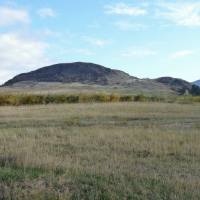
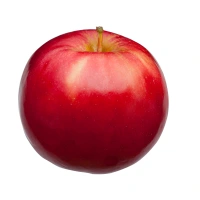

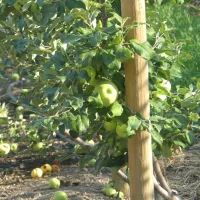
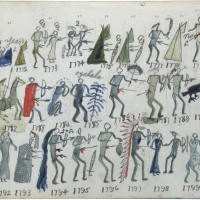

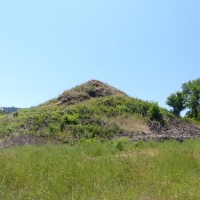
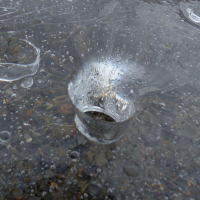
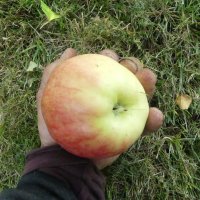

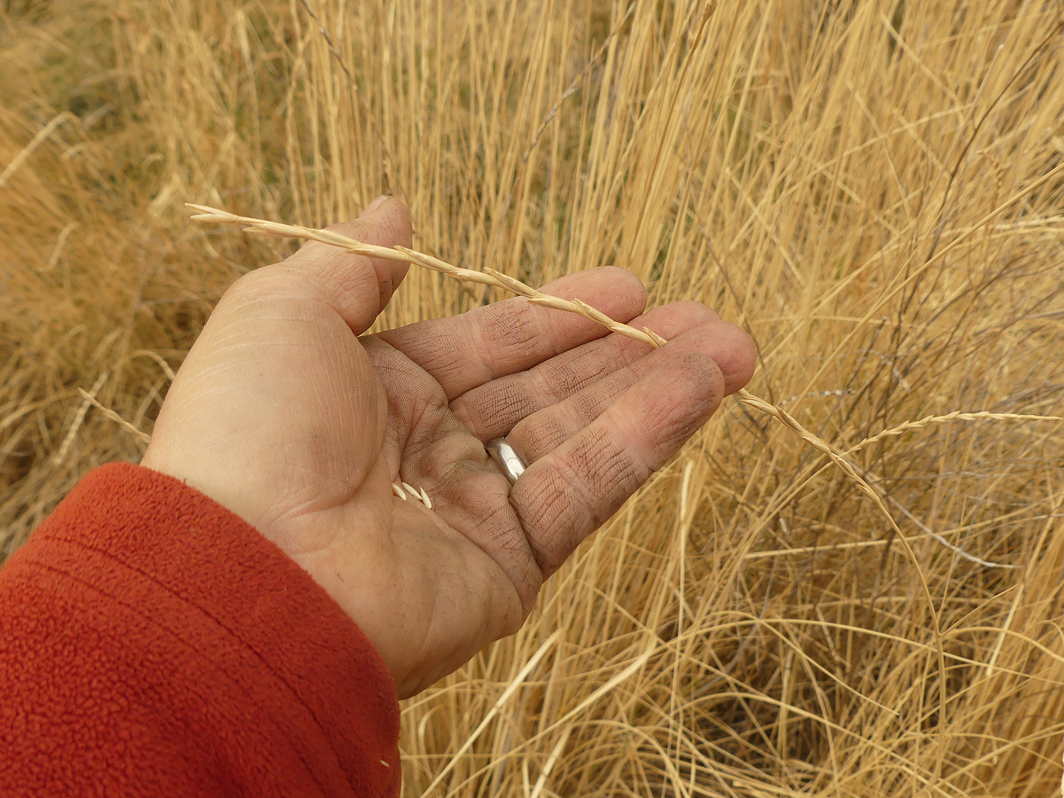






























A wonderful tour, Harold. Thank you.
Cheers,
Barry
LikeLike
Brilliant article.
LikeLike
Fascinating, Harold. You know so well how to let information flow.
best,
Gloria
LikeLike
Thank you, Harold, for a wonderful kick-off to what looks to be a glorious weekend at Georgian Bay–just one of the many gifts of the Canadian landscape. I so enjoyed this–makes me restless!
LikeLike
Thanks Harold…just wonderful!
LikeLike
Fascinating. I’m sure the millions of Germans who are against nuclear power would be most interested in knowing this information.
LikeLike